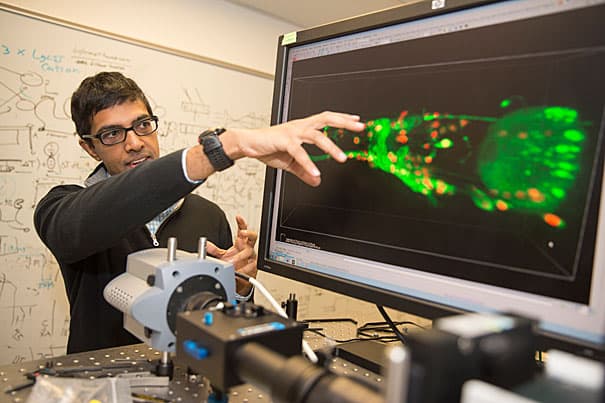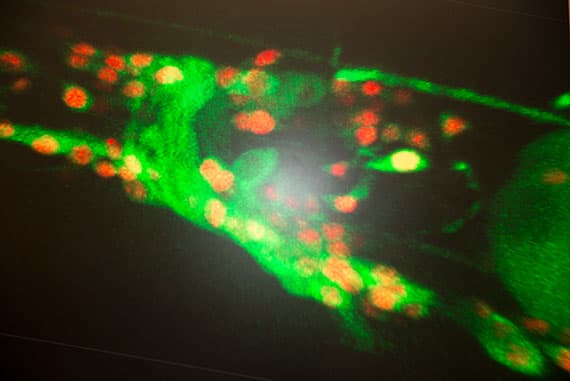Microscope Deciphers Neural Activity In The Brains Of Worms
Vivek Venkatachalam, a postdoctoral fellow from Harvard University has devised a microscope that encapsulates neural information into 3D images. This tool is believed to possess the potential to uncover the mysterious link between the neural signal and its corresponding behaviour. The group went about their work by investigating the crawling behaviour of tiny, transparent C. elegans worms using the microscope’s 3D imaging technique.
Senior author, Samuel explained that the newest achievement of their team would help to characterize the entire sensory periphery of an animal along with the motor dynamics that speak of decision-making in sync with techniques such as behaviour analysis, neurogenetics and connectomics. The team had been reportedly conducting experiments on the behaviour of worms, but they needed a way to look into the neural activity of those worms while they were performing any task. Mimicking a feedback system, the behaviour agitates the neural activity, which in turns affects the behaviour.

Vivek Venkatachalam: Explaining his work
Samuel accepted his students’ work as the complete system to analyse structural and functional circuits for different behaviours of worms. The microscope along with a software tracks the image patterns of neural positions from time to time and manages to comprehend its behavioural output. Using a fluorescent marker, the team then identified active neurons. After performing this experiment, researchers were able to reconstruct the worms’ posture which indirectly points at the particular neural pattern that was necessary to produce the output behaviour.

The precise location and activity of every neuron is recorded 10 times a second
The team claimed that their future research would improve the technical aspects of detection. They were hopeful of decoding each and every neural activity and match it with the corresponding behaviour. With such dedication, the research work is expected to unlock several secrets associated with neural systems. Their work was published in the Proceedings of the National Academy of Sciences.
Source: <a href="https://news.harvard.edu/gazette/story/2016/02/watching-sensory-information-translate-into-behavior/" target="_blank" rel="nofollow noopener noreferrer">Watching sensory information translate into behavior – Harvard Gazette</a>
Senior author, Samuel explained that the newest achievement of their team would help to characterize the entire sensory periphery of an animal along with the motor dynamics that speak of decision-making in sync with techniques such as behaviour analysis, neurogenetics and connectomics. The team had been reportedly conducting experiments on the behaviour of worms, but they needed a way to look into the neural activity of those worms while they were performing any task. Mimicking a feedback system, the behaviour agitates the neural activity, which in turns affects the behaviour.

Vivek Venkatachalam: Explaining his work

The precise location and activity of every neuron is recorded 10 times a second
Source: <a href="https://news.harvard.edu/gazette/story/2016/02/watching-sensory-information-translate-into-behavior/" target="_blank" rel="nofollow noopener noreferrer">Watching sensory information translate into behavior – Harvard Gazette</a>
0
